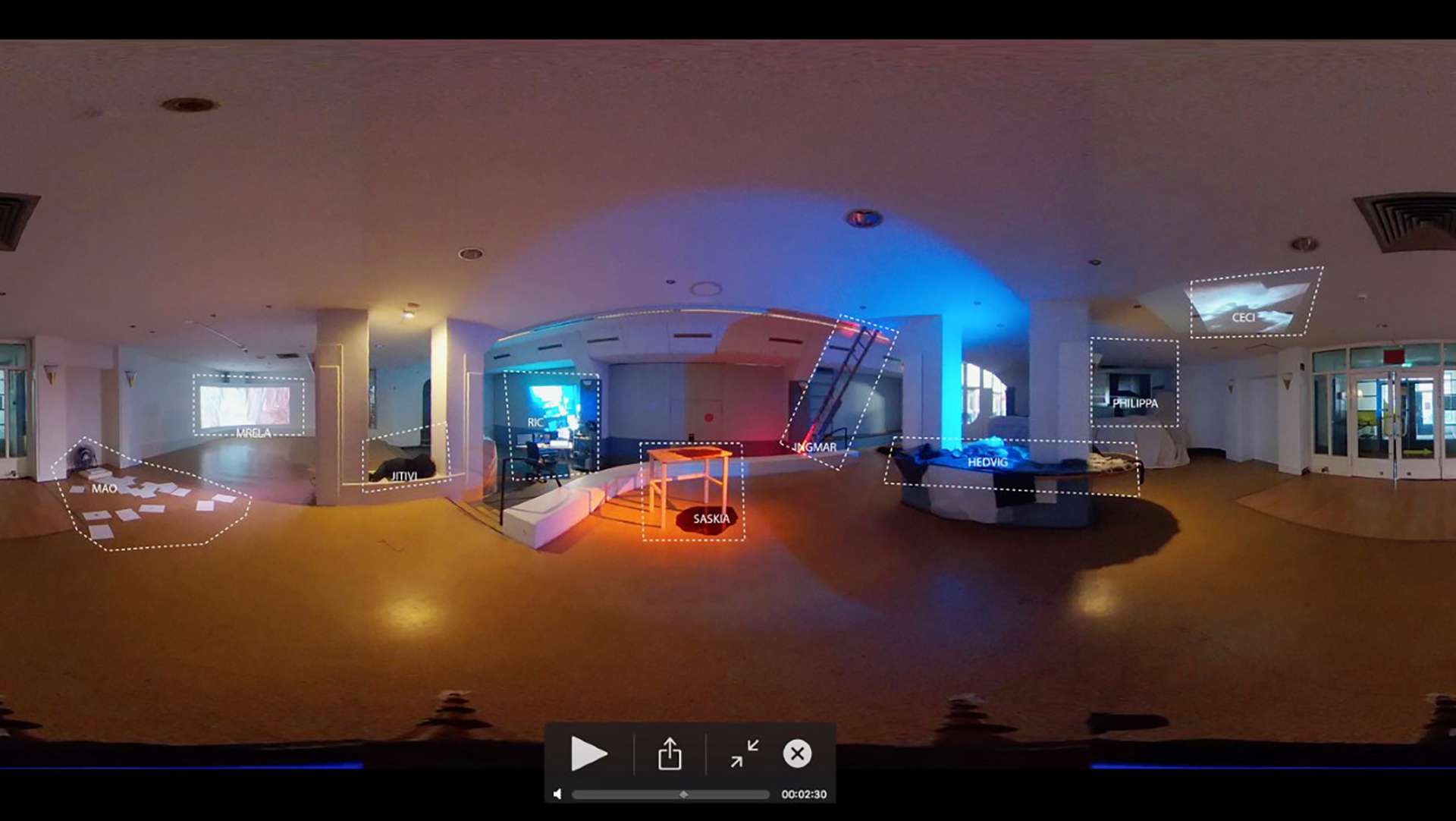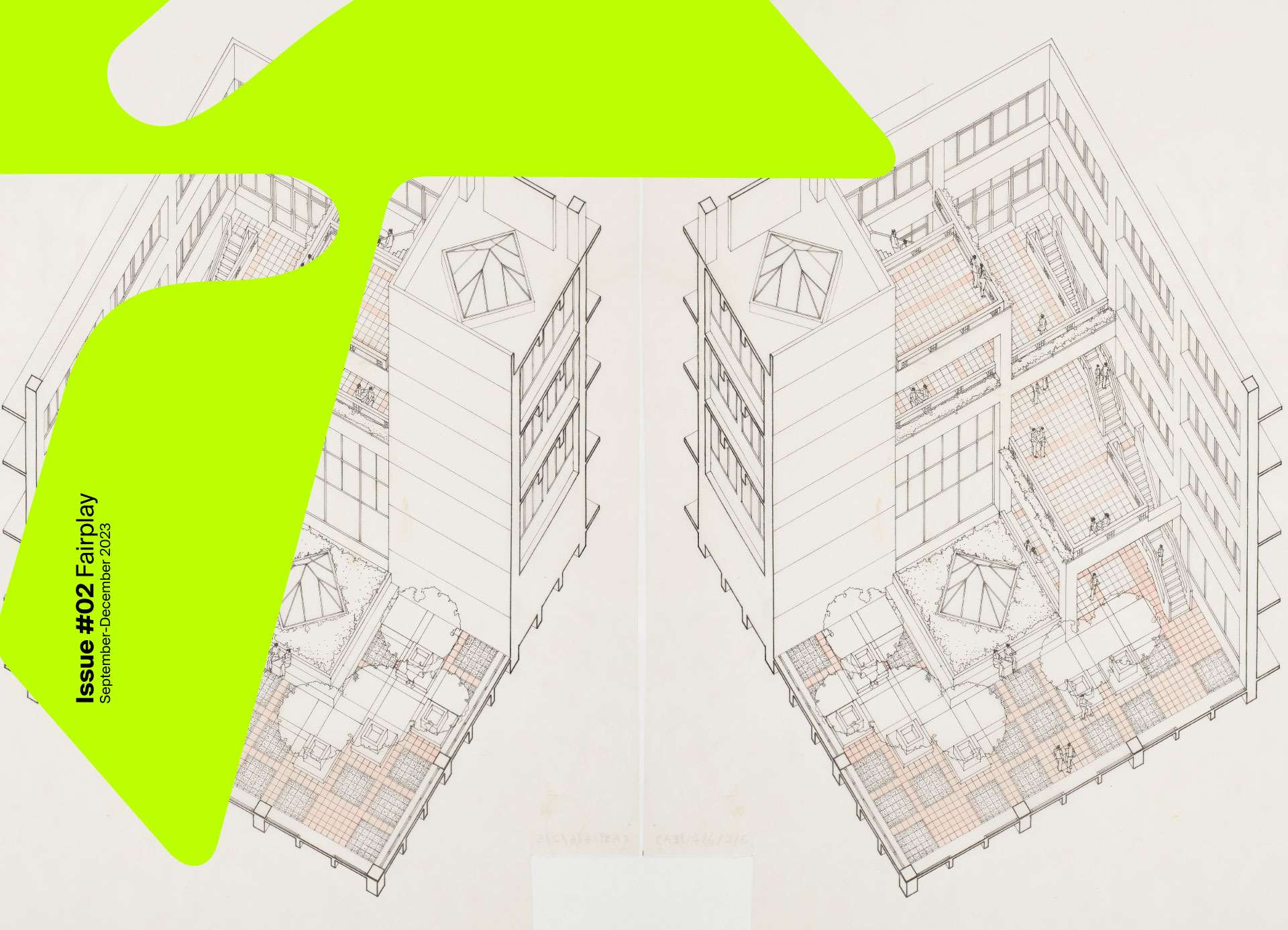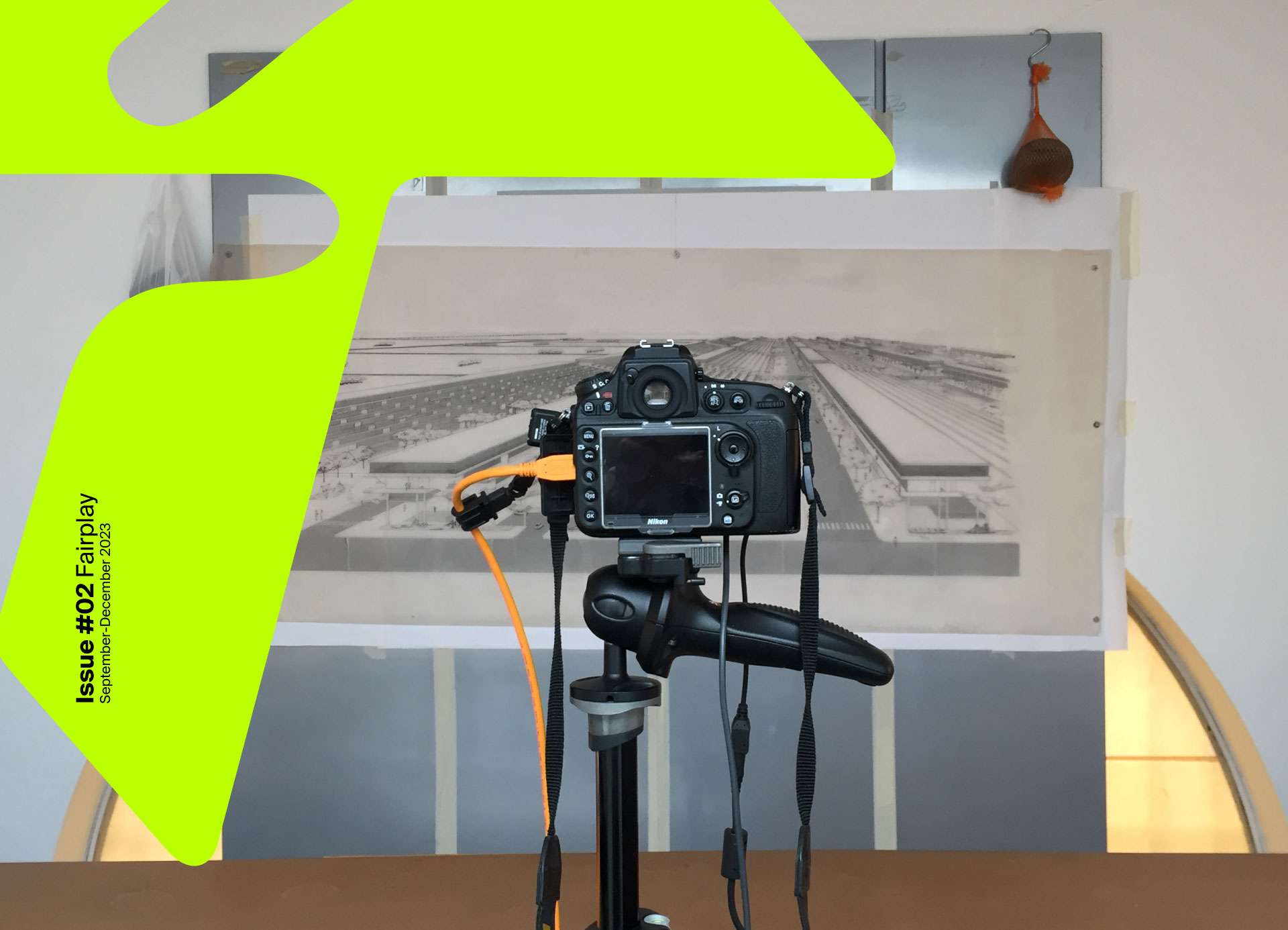Master Interior Architecture: Research + Design (MIARD) at the Piet Zwart Institute is a postgraduate international program that is part of the Willem de Kooning Academy in Rotterdam. Focusing on practice-based research and critical spatial strategies in the field of interior architecture, the program has curated its own archive for the last five years. Including projects rooted on the climate crisis, social justice, artificial intelligence, post-colonial practice, materialism, gender politics, global health, and posthumanism, the archive—which consists of nearly 300 projects and 1,500 documents—has recently relaunched a new search portal where visitors can (re)discover the multiplicity of ideas, methods and techniques that drive MIARD’s creative and research production.

MIARD, 2020 exhibition (online) http://www.miard2020graduation.nl/#/
The idea was to create a virtual space in the form of an archive that brings together the research, methods, and themes that students and faculty engage with.
KOOZ The first iteration of the MIARD archive was born in 2018, “on a wintery February morning in Rotterdam.” What were the main motivations behind this idea? Could you share some of your models and references—both theoretical and practical—and how did they influence the creation of the project?
AAS There was a growing interest to collect and make visible the range of multi-disciplinary projects in the program and how our students are critically researching spatial practice, disciplinary frameworks and notions of interiority. The idea was to create a virtual space in the form of an archive that brings together the research, methods, and themes that students and faculty engage with. Beforehand, we did not have a site where a visitor, student or teacher could look holistically at the multi-layered production of the program. We looked at many references. The architecture archives at the Canadian Center for Architecture, The Cooper Union and Het Nieuwe Instituut here in Rotterdam. Recent publications on digital cultural memory and archival practices such as Rogue Archives by Abigail de Kosnek and Archive Everything: Mapping the Everyday by Gabriella Gainnachi. The most influential resource was the assembly of 50 archival works included in The Archive as a Productive Space of Conflict by Markus Miessen and Yann Chateihne. It was liberating to realize that an archive did not need to be physical, nor be held down by historical precedents. For version 2.0, the research included meetings with students, alumni, faculty, and archivists with visits to the national archive at The Netherlands Institute for Sound & Vision. Our team included Olivier Otten and Daphne Heemskerk of Studio High-Rise, coding by Yannick Gregoire, and researcher Noëlle Ingeveldt.
It was liberating to realize that an archive did not need to be physical, nor be held down by historical precedents.
KOOZ The project “was conceived as an archival space to document the practice-based research” of the Master of Interior Architecture students at the Piet Zwart Institute. How have you adapted the archive throughout the years to accommodate the broad spectrum of work that it aims to include and display?
AAS There are many new features in version 2.0. Most importantly, we improved how a visitor searches for and experiences content by adding a new homepage and a search menu. Each project page is redesigned and developed with a full-screen viewing option to contain images, videos, text, and gifs and a menu to share content onto external platforms. Keywords and other projects by the same author are listed on the page, including relevant works by other authors in the collection. In addition to the projects, we archive the public activities of the program through announcements, publications, and exhibitions in the public section. The exhibition section now includes 25 productions that date back to 2012, each with text and images of the exhibition. With nearly 300 projects, the management and upkeep of the platform was a practical yet important factor for us to update. We developed an online template for students and faculty to automatically upload projects to WordPress for review and technically updated the platform’s navigation, including an automated backup system with digital storage.
With nearly 300 projects, the management and upkeep of the platform was a practical yet important factor for us to update.
KOOZ MIARD archive v2.0 press-release opens with a powerful quote: “the archive could become a productive space of conflict, conflict in the sense of means of production.”1 During the archive’s five years of existence, what productive conflicts have arisen? How have you dealt with them?
AAS That quote is from the book I mentioned earlier, The Archive as a Productive Space of Conflict. It’s important to clarify that the term “conflict”, when considered productive, is a conceptual notion to activate possible new relationships and meaning between archival content. It considers archival enclosures as flexible, porous, and non-static. We designed the MIARD archive's flexible grid and filter system with an open concept in mind. We were interested to see how new readings between subjects can emerge amongst the projects and across time. For example, technology as a subject in the collection has developed with novel ideas, tools and expressions. You can look at older projects next to new ones in the collection to study how specific themes, methods, and urgencies have shifted over time. There is an ongoing reading and re-reading of the content as it relates to new projects and to real-time. Another interesting lens or “productive conflict” is how the notion of the interior or interiority continues to expand, defined by the author’s practice-based research.
The term “conflict”, when considered productive, is a conceptual notion to activate possible new relationships and meaning between archival content.
KOOZ With nearly 300 projects and 1,500 documents, the possibilities are manifold. Could you speak about the interconnections between the works already archived and how does the interface bridge the multiplicity of themes and media currently cataloged?
AAS The networked content offers visitors a multi-layered reading on a subject. The interface uses keywords to link projects together based on subject, project type and year. With the new search tool, a visitor can directly search for an author and their work and explore other projects linked to it via a keyword. For example, if you search for “labor”, you get a range of projects across medium, year, and types. Thus, the general term “labor” can be perceived and studied through multiple lenses, situations and scales. If there are events in the public section linked to labor, these sources also appear. Each project has an URL that can link the content externally to relevant sources.
KOOZ Even though spatial research and practice bind the heterogeneous collection, what is the role of the digital and the un-built in the conformation of the MIARD archive?
AAS Collectively, it illuminates an expansive imagination of spatial research. Architecture is a creation of the imagination; it exists and circulates across many forms besides built form. As a digital space the archive provides online access to anyone, anywhere. It has developed as a critical resource and pedagogical device that embodies a collective, emergent tone in dialogue with real-time production. A visitor can read an essay, watch a video, look at models and drawings, or a spatial installation; there are multiple ways to navigate your spatial experience. Ultimately, I hope it works to display other voices and broaden disciplinary canons.
It has developed as a critical resource and pedagogical device that embodies a collective, emergent tone in dialogue with real-time production.
KOOZ How do you anticipate the future of the archive as a general tool of research and of the MIARD archive as a particular project?
AAS I would be interested to couple the archive with a research institution whose focus is in architecture and spatial practices and explore how to make the collection available to broader communities, positioning it alongside other types of archives. There are many organizations looking to activate their collections by initiating archive-related public programming. Finally, there is now generative AI that could radically shift education and the MIARD archive towards unforeseeable forms.
Bio
Alex Augusto Suárez is Course Director of MIARD, a multidisciplinary practice-led research Master Interior Architecture program at Piet Zwart Institute, Willem de Kooning Academy. He has previously held teaching and academic positions at Woodbury University, Willem de Kooning Academy, Ecole Speciale d’Architecture, and UCLA. Alex holds a Master of Architecture from the University of California, Los Angeles (UCLA) and a Bachelor of Architecture from the Tyler School of Art and Architecture, Temple University, Philadelphia, and Rome. He works across the fields of architecture, design, and education with an interest in expanded notions of interiority. His work has appeared internationally at Site-Reading Writing Quarterly, Interior Provocations, deSingel Internationale Kunstcampus, Wattis Institute of Contemporary Art, Gyeonggi International Ceramic Biennale (GICB), and WUHO Gallery, amongst others. He is a former artist-in-residence at EKWC in the Netherlands. For more than 15 years he worked in architecture and design studios in Los Angeles, San Francisco, Rio de Janeiro, and Istanbul.
Federica Zambeletti is the founder and managing director of KoozArch. She is an architect, researcher and digital curator whose interests lie at the intersection between art, architecture and regenerative practices. In 2015 Federica founded KoozArch with the ambition of creating a space where to research, explore and discuss architecture beyond the limits of its built form. Parallel to her work at KoozArch, Federica is Architect at the architecture studio UNA and researcher at the non-profit agency for change UNLESS where she is project manager of the research "Antarctic Resolution". Federica is an Architectural Association School of Architecture in London alumni.
Notes
1 Miessen, Markus and Chateigne, Yann, The Archive as a Productive Space of Conflict, (Berlin, Sternberg Press, 2016), p19





